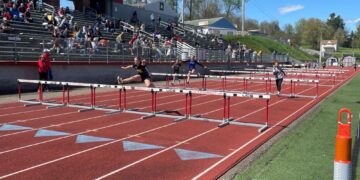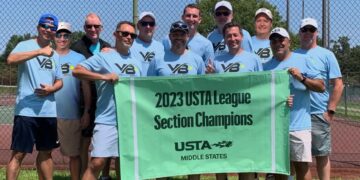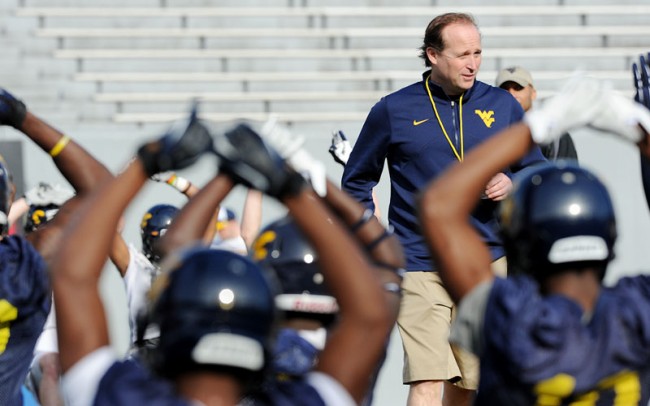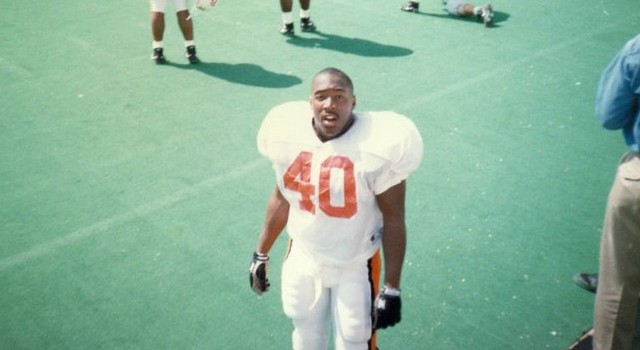WEST VIRGINIA, What happened in 2012?
The first five games of the season were tremendous. The Mountaineers were 5-0. They had two wins against teams that were ranked at the time including a road win at Texas. “Country Roads” was booming out. The defense was no good, but quarterback Geno Smith was in the middle of what looked to be a season so good, the Heisman was a foregone conclusion and the only thing left to determine was what records he would hold by year’s end.
When that mojo left West Virginia, it left quickly.
A 49-14 loss at Texas Tech was just the start. That started a five-game losing streak. West Virginia rallied to win its final two regular-season games but no-showed in a Pinstripe Bowl loss against Syracuse. A once-promising season ended at 7-6. Once Smith fell into a personal slide that knocked him not only out of the top spot for the Heisman but out of the race entirely, the Mountaineers were exposed.
Even worse, graduations have decimated the roster that barely finished above .500.
What makes them interesting in 2013
The question in 2013 is where West Virginia’s program goes. Can it be the kind of team that withstands massive personnel losses and remains at least competitive in the Big 12 and in bowl contention, or will it fade away without its stars?
West Virginia has nine starters returning and only four FBS teams have fewer than that, according to Phil Steele. The offense takes massive hits, including likely first-round picks Smith and receiver Tavon Austin, and receiver Stedman Bailey. This season will test Dana Holgorsen’s ability as a coach and his offensive system, because there’s just not much experience to work with.
Nobody expects West Virginia to win a conference title this year, but it will be interesting to see how good the Mountaineers can be in a rebuilding year.
What needs to happen this spring
At some level, you have to trust Holgorsen’s offensive mind to field a unit that will produce yards and points, no matter how many new players there are. The defense, however, is what needs to come around.
The defensive changes started before the bowl game, when Keith Patterson was promoted to be coordinator and called the plays against Syracuse. Now Patterson has an offseason to implement changes in the scheme.
Holgorsen said there’s open competition at every defensive position, and while that’s not really true, there are many positions that will have to be evaluated on a defense that finished 108th in total defense and 114th in scoring defense last year. Almost all of the defensive line returns. Linebacker Isaiah Bruce had 94 tackles as a freshman last year and is back. The Mountaineers played a lot of freshmen on the defensive line and cornerback last season, and that should pay off this year. But the defense has a long way to go.
Gamechangers
The offense might look a little different, because it will probably rely more on the running game. Holgorsen pointed out that his best offenses as a coordinator had effective ground games. Andrew Buie and Dustin Garrison combined for more than 1,000 yards last year, which isn’t bad considering how often Smith threw and that Austin was a key part of the running game late in the year.
Holgorsen praised his group of backs going into spring practice. He will use them often, especially early in the season.
Wild cards
Even if Smith’s great first half/head-scratching second half took some of the luster off him, 42 touchdowns and six interceptions with more than 4,200 yards passing is no joke. The Mountaineers won’t replace him easily.
Holgorsen said he doesn’t plan to name a starter for a long time. He and the staff are in full evaluation mode, and Paul Millard, Ford Childress and Chavas Rawlins are competing for the job. Millard has some experience, but not much. The coaches say it’s wide open, and there’s no reason to disbelieve that. Millard and Childress are pocket passers, while Rawlins can run a little bit. It would be surprising if any of them secured the job before spring practice ends. The Mountaineers hope one does eventually emerge to lead the offense.
Key games
Sept. 7 at Oklahoma
Sept. 28 vs. Oklahoma State
Oct. 5 at Baylor
Nov. 9 vs. Texas






























